The 5 Pots and Pans You Really Need, Plus 1 Ingenious Tool
These hardworking pieces will get you through almost every meal you'll ever make.
By Lynn Andriani
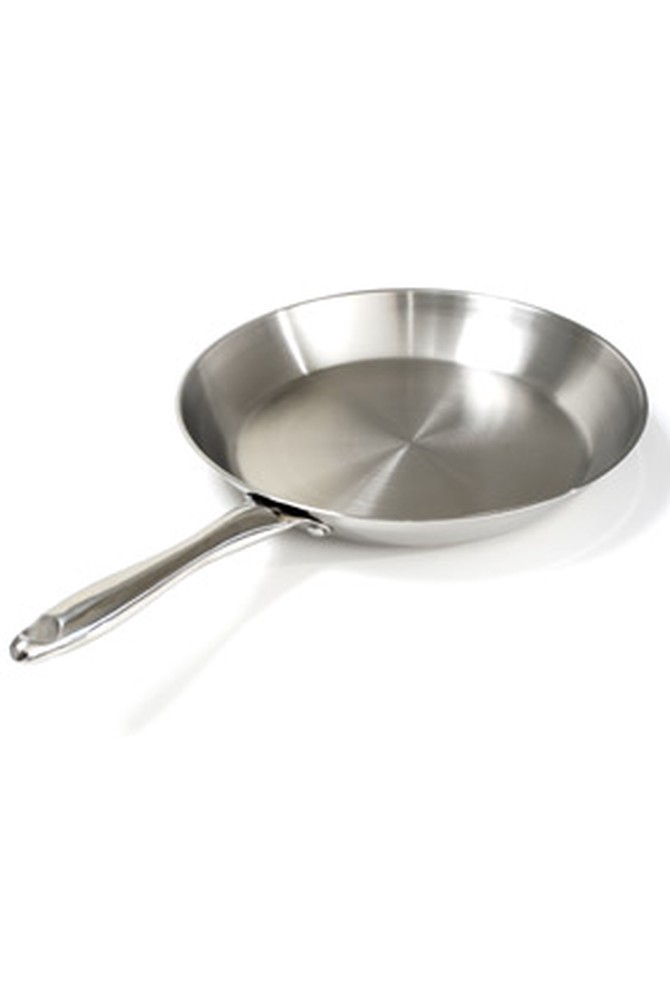
Photo: Thinkstock
To Get a Perfect Sear and Browned Bits: The Frying Pan
Sure, you can pan-fry vegetables, fish and meat in a nonstick pan and have an easier time doing the dishes, but if you want caramelization—also known as the process that makes a piece of salmon a little crusty on the outside yet tender on the inside instead of cooked through but decidedly soft—a frypan (aka skillet) is a must. The surface also gives you those tasty browned bits that make for deeply flavored gravies and sauces. And its sloping sides simplify stirring, turning and flipping ingredients, whether you're making pork chops or pancakes.
Size: 10-inch
Make sure to...choose a frying pan made of a metal that conducts heat efficiently, such as anodized aluminum, cast iron, lined copper or stainless steel–wrapped aluminum.
But don't...cook with it using the highest heat. Keep the flame between low and medium-high; otherwise, you risk burning food and making cleanup a real chore (if you do find the pan has black spots you can't remove with dish soap, try Bar Keepers Friend).
Try this recipe: Sautéed Spring Vegetables
Size: 10-inch
Make sure to...choose a frying pan made of a metal that conducts heat efficiently, such as anodized aluminum, cast iron, lined copper or stainless steel–wrapped aluminum.
But don't...cook with it using the highest heat. Keep the flame between low and medium-high; otherwise, you risk burning food and making cleanup a real chore (if you do find the pan has black spots you can't remove with dish soap, try Bar Keepers Friend).
Try this recipe: Sautéed Spring Vegetables
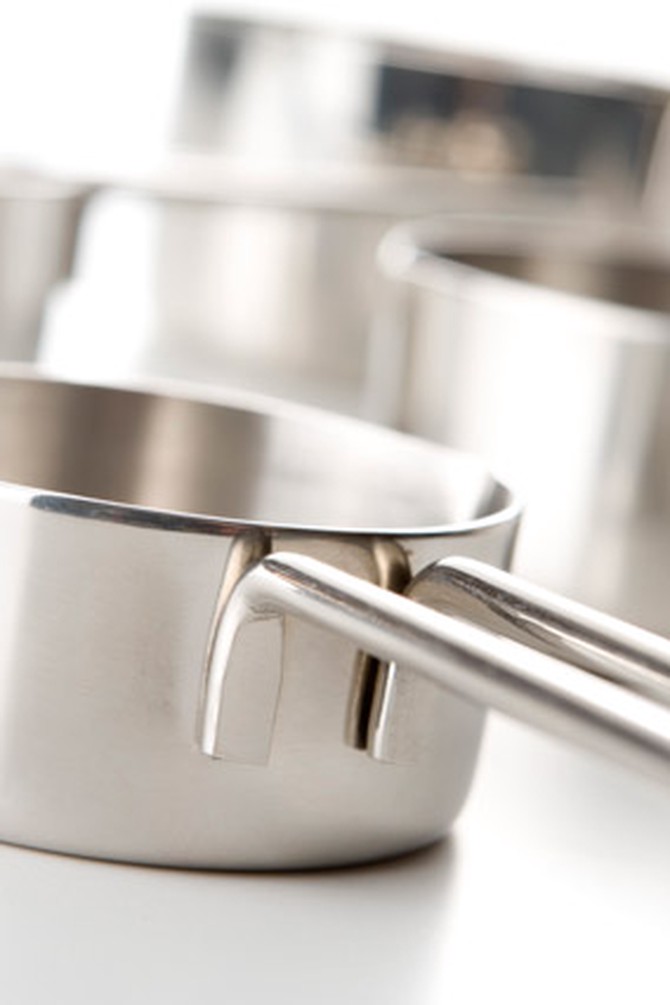
Photo: Thinkstock
To Heat Up Some Soup: The Small Saucepan
Whether you live alone or have a family of five, this little pot will get a lot of action. Katie Workman, founding editor of Cookstr.com and author of The Mom 100 Cookbook, uses her smallest saucepan for reheating anywhere from one to four portions of chili or soup, or making rice for up to four people. It also comes in handy when warming up sauces or making caramel or hot fudge. Some versions (such as All-Clad's) have a smaller diameter (6 inches) but higher sides (4 1/4 inches) than others, which helps food stay hot even with the lid off.
Size: 2-quart
Make sure to...only fill the pot two-thirds of the way (or less) with food. Leaving some room at the top for the air to circulate within the confines of the saucepan walls will help whatever you're cooking stay moist.
But don't...forget a tight-fitting lid, which will ensure rice, couscous and other grains get the steam they need to cook properly.
Try this recipe: Hot Fudge Sauce
Size: 2-quart
Make sure to...only fill the pot two-thirds of the way (or less) with food. Leaving some room at the top for the air to circulate within the confines of the saucepan walls will help whatever you're cooking stay moist.
But don't...forget a tight-fitting lid, which will ensure rice, couscous and other grains get the steam they need to cook properly.
Try this recipe: Hot Fudge Sauce
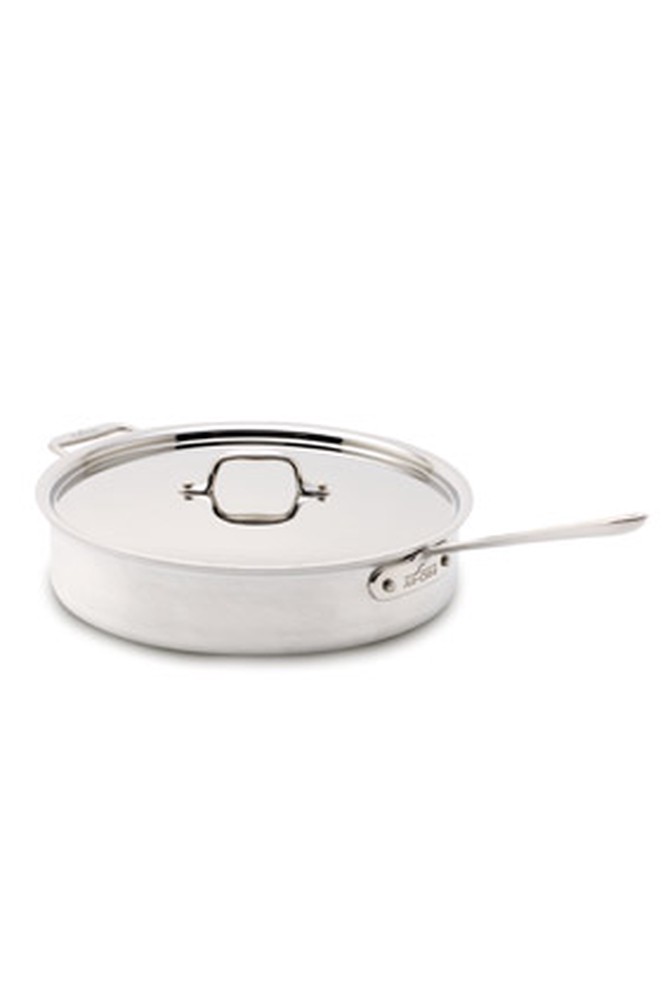
Photo: All-Clad
To Make 5 or 6 Chicken Breasts Nice and Crispy, All in 1 Batch: The Large Sauté Pan
Workman received a 6-quart stainless steel sauté pan as a wedding gift 16 years ago and has since used it for everything from pancakes to arroz con pollo. It has a wide, flat bottom that may seem huge but is key to giving food space to brown, since ingredients will just steam when packed too closely together. Its straight, fairly high sides (most are about 2 1/2 inches) accommodate liquids, which means you can sear chicken breasts, add stock or tomato sauce, pop the lid on and let the whole thing simmer without worry of it bubbling over; you can also stir a reduction easily and not have it spill out.
Size: 6-quart (13-inch diameter)
Make sure to...buy a pan with a smaller, "grab" handle opposite the long, main handle. Because these pieces can weigh nearly 7 pounds (empty!), you'll probably need to hold on with two hands when putting it in the oven or bringing it to the table. The little handle should be big enough that you can grip it while wearing an oven mitt.
But don't...get a pan that's too big for the burner element it will be used on. While a large pan is undoubtedly useful, if you buy one that's out of proportion with your stove, you'll constantly be moving food so it cooks evenly, and will have trouble fitting two more pots (e.g., for a vegetable and a starch) on the cooktop alongside it. Measure the diameter of one of your stove's grates (or heating elements if you have electric) before you shop, and don't buy a pan that's more than an inch bigger across.
Try this recipe: Chicken Piccata-ed or Plain
Size: 6-quart (13-inch diameter)
Make sure to...buy a pan with a smaller, "grab" handle opposite the long, main handle. Because these pieces can weigh nearly 7 pounds (empty!), you'll probably need to hold on with two hands when putting it in the oven or bringing it to the table. The little handle should be big enough that you can grip it while wearing an oven mitt.
But don't...get a pan that's too big for the burner element it will be used on. While a large pan is undoubtedly useful, if you buy one that's out of proportion with your stove, you'll constantly be moving food so it cooks evenly, and will have trouble fitting two more pots (e.g., for a vegetable and a starch) on the cooktop alongside it. Measure the diameter of one of your stove's grates (or heating elements if you have electric) before you shop, and don't buy a pan that's more than an inch bigger across.
Try this recipe: Chicken Piccata-ed or Plain
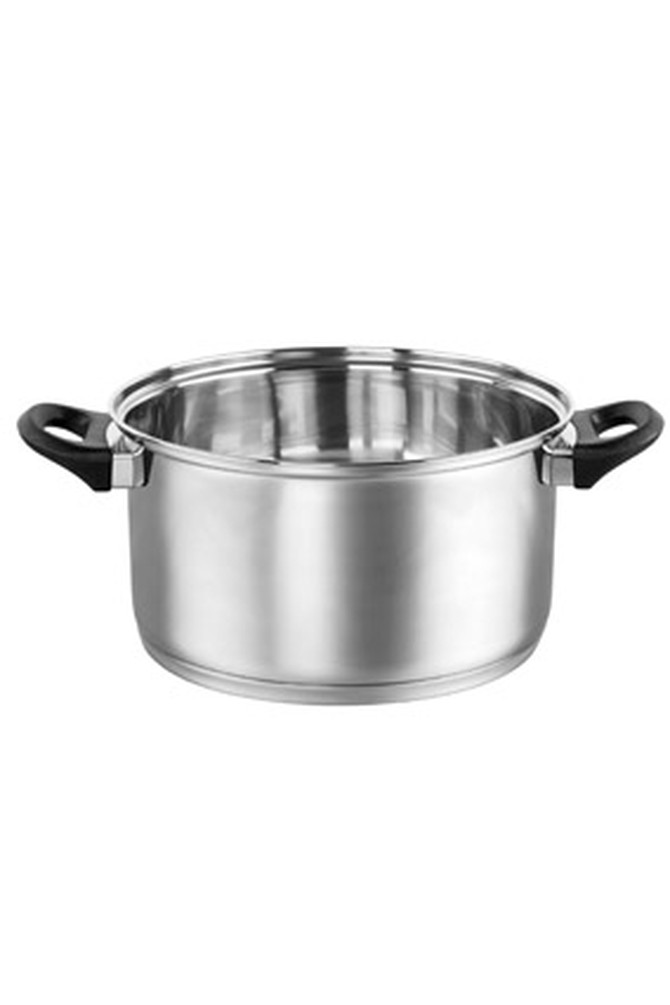
Photo: Thinkstock
To Cook Pasta: The Stockpot
You might think you don't need a stockpot, but owning such a piece really comes down to one thing: pasta. An 8-quart pot is necessary for boiling a pound of macaroni, which will feed four to six people (the pasta may fit in a smaller pot, but the water won't circulate as well, resulting in gummy penne). You'll use this piece for soups, stocks and chilies too. In Workman's house, it also doubles as the popcorn maker.
Size: 8-quart
Make sure to...purchase a pot with a thick, heavy bottom. This will prevent burning, which isn't an issue for pasta but is a concern for soup, since it cooks for a long time.
But don't...go for anodized aluminum (which is dark gray or black) if you're a new or unsure cook. When you're sautéing onions, celery and carrots for soup, for instance, it'll be difficult to see what color the vegetables are (e.g., to determine if they're translucent, as you want them, or pale, which means they've cooked too long), against the pot's dark bottom.
Try this recipe: Lentil, Tomato and Rice Soup
Size: 8-quart
Make sure to...purchase a pot with a thick, heavy bottom. This will prevent burning, which isn't an issue for pasta but is a concern for soup, since it cooks for a long time.
But don't...go for anodized aluminum (which is dark gray or black) if you're a new or unsure cook. When you're sautéing onions, celery and carrots for soup, for instance, it'll be difficult to see what color the vegetables are (e.g., to determine if they're translucent, as you want them, or pale, which means they've cooked too long), against the pot's dark bottom.
Try this recipe: Lentil, Tomato and Rice Soup
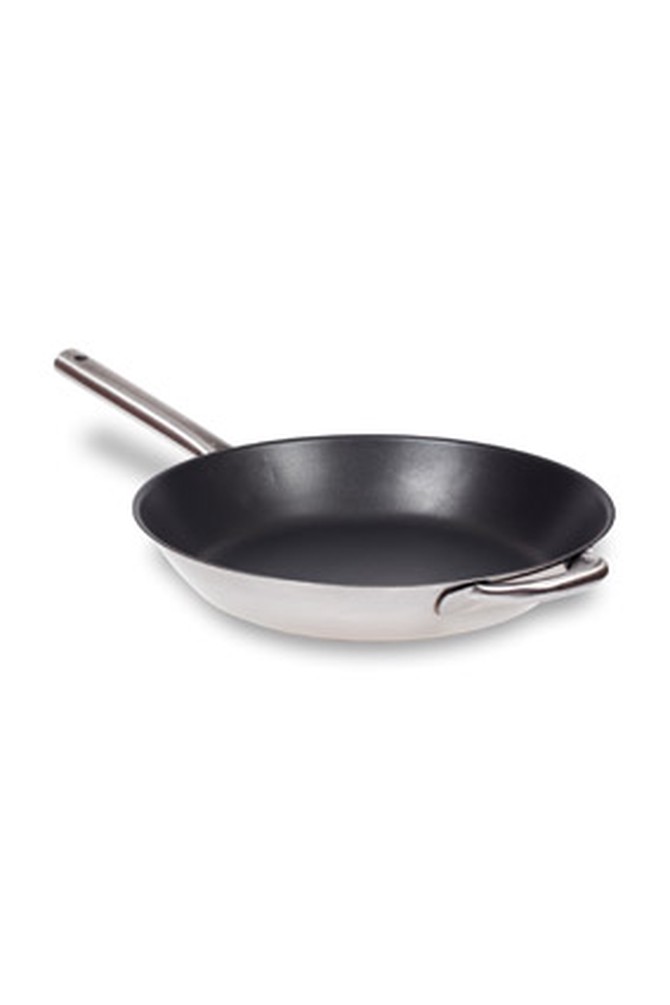
Photo: Thinkstock
To Make Eggs Over Easy Really Easy: The Nonstick Pan
While you want a steak or Brussels sprouts to develop caramelized edges, crisp browning isn't usually the goal when cooking eggs. A nonstick skillet will take you from omelets to quesadillas (it's also helpful if you're trying to cook healthy food, since you'll use less butter or oil). But while every other pan in your arsenal may last long enough to be handed down to the next generation, the nonstick skillet won't have such longevity. Even the most high-end ones tend to lose their food-releasing powers within five years. Still, you can prolong the life of yours by stirring with only soft utensils made of wood or silicone, washing it with a soft cloth or sponge and mild dish soap, and avoiding the dishwasher at all costs.
Size: 7- to 10-inch
Make sure to...consider your breakfast-making habits before you buy. If you often make two-egg omelets, a 7-inch pan is the perfect size; a 9-inch pan is better for four- or five-egg omelets.
But don't...spray your pan with cooking spray. Eventually it will build up and turn sticky (usually this happens around the edges, where the heat doesn't melt it away). If your pan is truly nonstick, it won't need anything; if you must, use oil.
Try this recipe: Scrambled Eggs, Many Ways
Size: 7- to 10-inch
Make sure to...consider your breakfast-making habits before you buy. If you often make two-egg omelets, a 7-inch pan is the perfect size; a 9-inch pan is better for four- or five-egg omelets.
But don't...spray your pan with cooking spray. Eventually it will build up and turn sticky (usually this happens around the edges, where the heat doesn't melt it away). If your pan is truly nonstick, it won't need anything; if you must, use oil.
Try this recipe: Scrambled Eggs, Many Ways
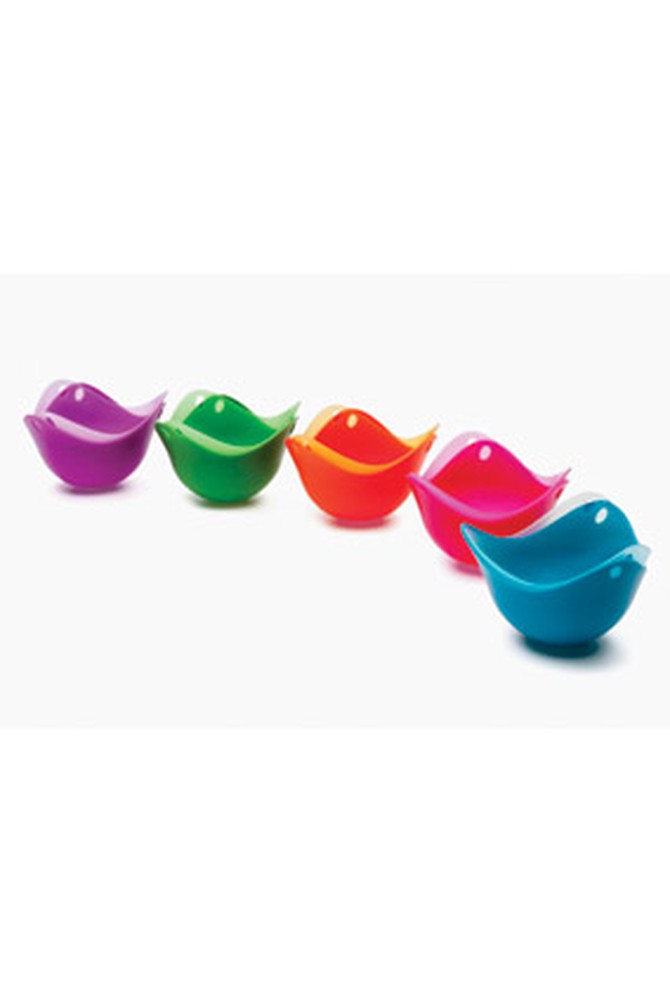
Photo: Fusionbrands
Silicone Egg Poachers
A warm poached egg with a gooey yolk is a thing to behold, whether eaten with crunchy sourdough toast or gently laid atop a frisée salad. You can make one in a pan of barely simmering water with a splash of vinegar, though it can be difficult to prevent flyaway strands of egg white. And egg poacher pans are foolproof, but take up valuable cabinet space. That's why we love these flexible cups, which allow you to float and poach an egg in a small saucepan of boiling water, like a lily pad on a pond. You can also use them to make small desserts or melt chocolate chips.
Size: They only come in one size, in sets of two.
Make sure to...coat the cups with nonstick spray or rub some oil inside so the eggs release easily.
But don't...try to grip the edges with a potholder to remove them from the pot; the pods are too small. The best way we've found is to slide a chopstick through two of the three holes (which are meant to keep the pod in place when you put it in the top rack of your dishwasher) and lift.
Try this recipe: Poached Eggs with Matcha Sea Salt
Keep Reading
6 mistakes that a busy cook makes
Size: They only come in one size, in sets of two.
Make sure to...coat the cups with nonstick spray or rub some oil inside so the eggs release easily.
But don't...try to grip the edges with a potholder to remove them from the pot; the pods are too small. The best way we've found is to slide a chopstick through two of the three holes (which are meant to keep the pod in place when you put it in the top rack of your dishwasher) and lift.
Try this recipe: Poached Eggs with Matcha Sea Salt
Keep Reading
6 mistakes that a busy cook makes
Published 03/20/2012

